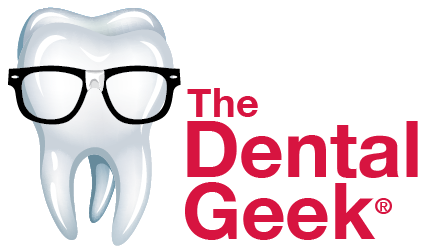New Dental Technologies You Can Use Now to Transform Smiles
We are living in an age when rapid advances in science and technology are revolutionizing dental care. What seemed like science fiction just a couple of decades ago is now a reality. Dental technologies are transforming smiles—but they are also improving the experience for both dentists and patients.
Self-repairing teeth and the end of plaque bacteria may still be “out there” a bit. However, the technologies available today are paving the way for a new era in dentistry.
Teledentistry
The use of teledentistry has seen huge growth. Its benefits in preventing the spread of disease by minimizing contact during the pandemic are clear. But, as face-to-face consultations come back, will the role of teledentistry still play a part?
Talk of a post-pandemic world might seem premature. Local lockdowns or social distancing measures are still very much part of our lives. With the aim to avoid physical clinical interactions, all indications show that teledentistry will remain important in the future. Additionally, it confers benefits to dentists and patients that complement existing services.
For example, patients can be triaged and offered the appropriate medical advice through a virtual emergency dentist appointment. Consequently, this avoids unnecessary visits to the dental office and improves accessibility, efficiency and waiting times.
Pain-free Injections
Pain-free dentistry is a commonly used term, but it does nothing to alleviate the initial pain associated with an injection. This is caused by the pressure of the liquid being injected, not the needle. However, many patients associate the pain with the needle. Regrettably, just one negative experience with an injection can have an emotional impact on patients for the rest of their lives.
Fortunately, emerging new technologies, such as The Wand® offer a solution. A small, computerized device that looks like a pen delivers the anesthesia slowly, providing a dental injection that is completely pain-free.
Traditional anesthesia can leave the entire side of the face numb for several hours. This makes talking, drinking and eating difficult. Additionally, there is a greater chance of injury if the patient bites their cheek or tongue. Known as single-tooth anesthesia, it delivers it precisely to the area that needs it. Thus, any numbness is localized without affecting the wider area.
Another advantage of this technology is that it works instantly. Dentists can commence treatment immediately, without waiting for the anesthesia to take effect—and patients spend less time in the chair. This is an advantage in children’s dentistry, since keeping them in the chair can be challenging.
For children and needle-phobic adults, creating confidence is essential. Pain-free injections can play an important role in building trust. And if your patients trust you, they are more likely to return.
Digital Impressions
Conventional dental impressions are made from alginate. This is a glutinous substance that is used to create molds of the teeth. Its application is uncomfortable and unpleasant, often invoking a gag reflex. It can also prove difficult for dentists to get an accurate impression without multiple attempts.
A wide variety of dental procedures need impressions: crowns, dentures, orthodontics and mouthguards alike. A simpler and less uncomfortable way of obtaining accurate impressions would seem to be a win-win situation. Digital impressions offer that solution, benefiting patients and dentists alike.
Using computer technology, the process is comfortable and quicker. A simple scanning process takes 3D images and projects them onto a chairside screen. This allows patients to see and understand the proposed treatment. The technology even demonstrates before and after treatment results. Consequently, patients are fully aware of the processes and expected outcome.
CAD/CAM Technology
CAD/CAM (computer-aided design/computer-aided manufacturing) is another digital tech solution revolutionizing dentistry. It is computer software used in the production of dental prostheses and restorations. Instead of using an outside laboratory to make restorations, such as crowns, it can be done in-house while the patient waits.
Using digital images of a patient’s mouth, dental restorations are designed and displayed on a computer screen. The software allows changes to the size, shape and color of the restorations. Once complete, the final design is sent to an on-site milling machine. From a block of solid ceramic, the machine produces a tailor-made restoration. This is then fitted by the dentist the usual way, using a bonding process that secures the restoration in place.
1: Tooth preparation
The tooth is prepared by removing decay or structurally unsound portions of the tooth
2: Intraoral scanning
Captures 3D images of the prepared tooth and surrounding teeth
3: Design Restoration
4: Milling
5: Staining, glazing and polishing
The restoration has the finishing touches applied to create a more natural appearance
6: Affix Restoration
The complete process includes:
The restoration is cemented firmly in place, using a special light-activated adhesive that bonds it securely to the tooth
CAD/CAM is a single-visit treatment that can shave 2–3 weeks off treatment times. It is a convenient and more comfortable process for patients, and is easier for dentists. It is not always the best option for every patient, but is a great service to offer alongside traditional restorative dentistry.
The Takeaway
This era of advancing technology is far from over. As patient expectations increase, future advances will offer even more options for clinicians. With enhanced patient care and comfort, a blueprint for better oral healthcare is now here.

[…] design (CAD) and computer-assisted manufacturing (CAM), including 3D printing, the world of dental treatments is slowly changing. The process is becoming quicker and more affordable. 3D printers help in printing orthodontic […]
[…] generic cialis no prescription […]